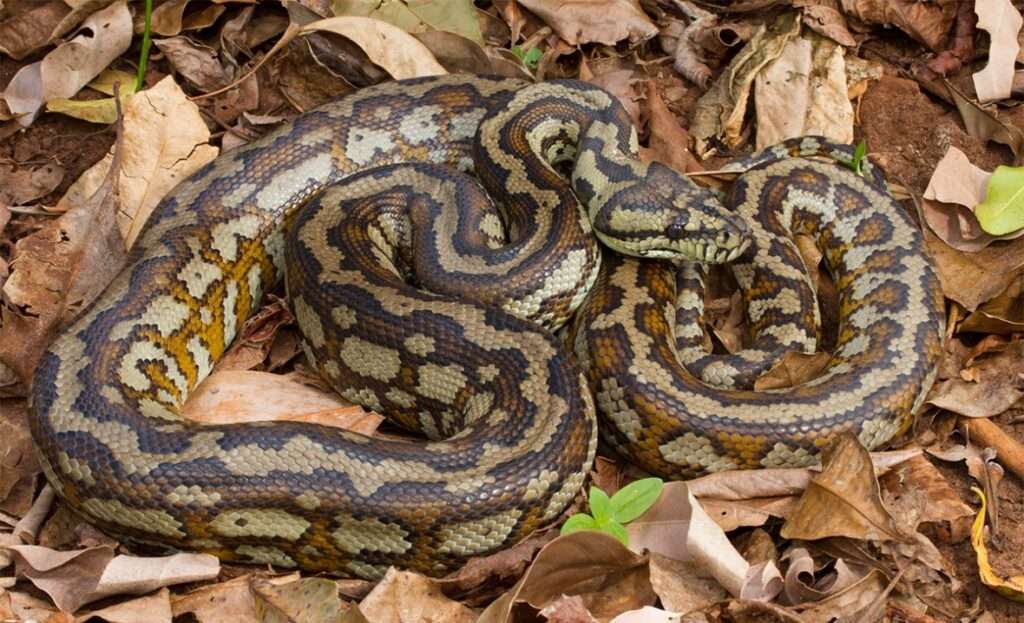
Description:
Scientific name: Morelia spilota
Life span: Up to 20 years
Even while most don’t reach 4 meters in length, carpet pythons can grow to be terrifying lengths of up to 2.5 meters. They may conceal themselves beneath leaf litter in tree hollows, logs, and rocky crevices thanks to their stealthy nature and well-camouflaged olive to brown skin with cream spots.
The Carpet Python is a sizable snake so named because of the lovely markings that mimic an oriental carpet pattern on its skin. They have a wide range of colors, from olive to black with white, cream, and gold markings. On a background of gray or a shade of brown, the patterning may be basically diamond-shaped or feature detailed markings made up of bright and dark bands. Typically, this species’ males are smaller than females, and in some places, females can weigh up to four times as much.
Native Region/Habitat
Areas of Australia, Indonesia, and New Guinea contain them. They used to be common in southeast Australia, but their population has been steadily declining. Although they can be found in rocky places and other habitats, they are frequently connected with River Red Gum habitat in the wild.

Behavior:
The timid and docile carpet python is a common snake. They are affordable and a well-liked pet among those who enjoy snakes. They are not poisonous and won’t bite unless provoked.
Tree snakes known as carpet pythons are semi-arboreal, meaning they can move away from trees and still survive. They spend most of the day sleeping, moving around open spaces like rock faces, forest floors, and even roadways while climbing trees and bushes. They might, however, be spotted sunbathing during the day. They typically find refuge in hollow tree limbs, cracks in the rock, and even abandoned animal burrows. Only when they are ready to procreate do carpet pythons gather in groups.
Care As a pet/In captivity:
They are highly well liked by people who raise reptiles. Their manageable mature size, relatively placid disposition, and appealing color variation are the reasons behind this.
They therefore require a huge enclosure. Terrariums 40 gallons in length are suitable for housing young animals. They are best housed in enclosures that are six feet long because they won’t fit in this tank indefinitely.
They can be kept in a glass terrarium or a specially built enclosure:
- Either a glass or a custom-made tank.
- Minimum tank size is 4 feet long.
- No lighting.
- Mulch made of aspen or cypress.
In order for a Carpet Python to control their body temperature, their enclosure must have a temperature gradient. Their cage should have an ambient side that is 70 to 75°F and a hot side that is 85 to 90°F.
For carpet pythons, normal humidity levels are sufficient. Humidity levels in the typical home range from 40 to 50%, which are ideal.
Wild animals eat rats, birds, and lizards. Typically, in captivity, carpet pythons are fed rodents.
Table





